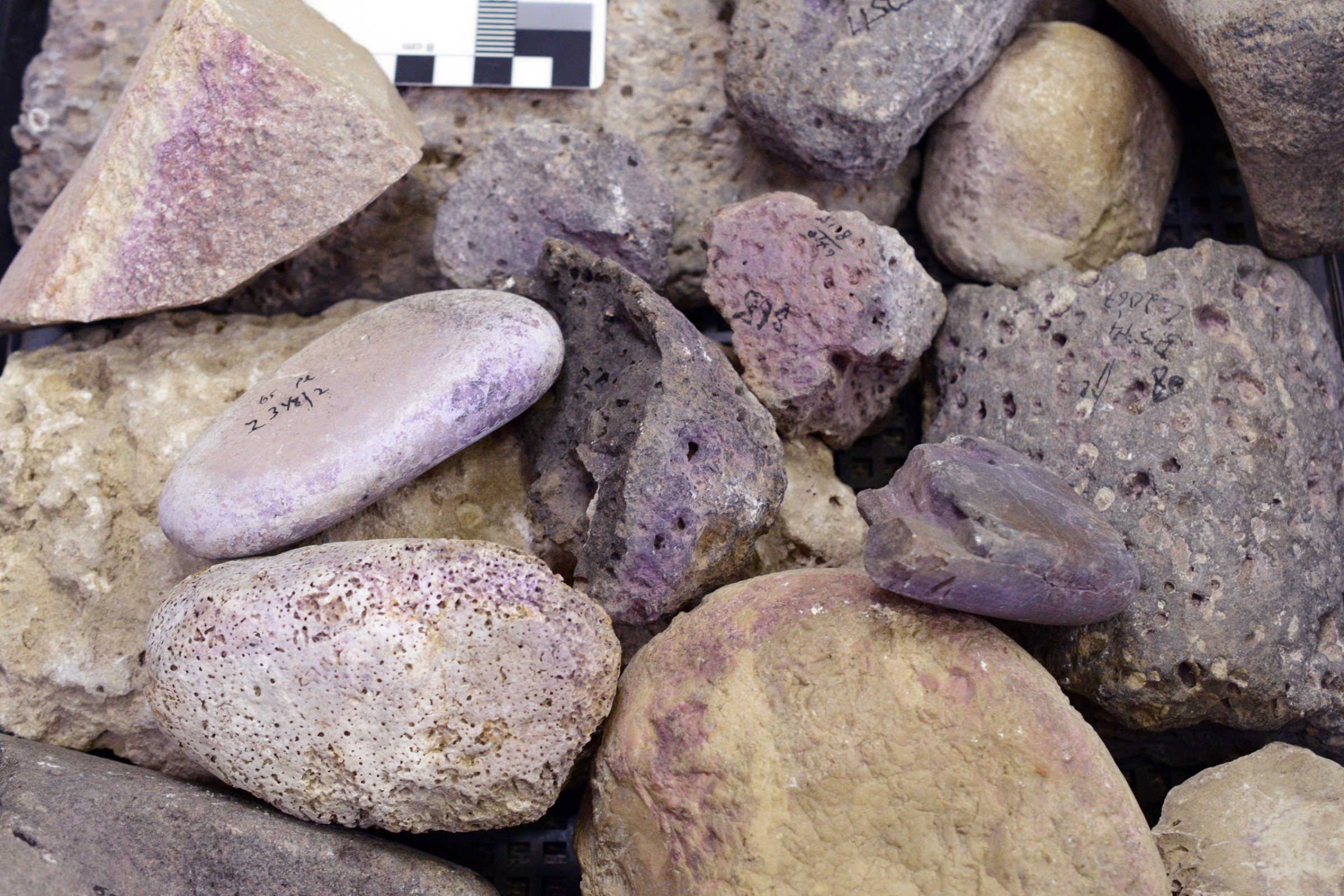Throughout the Iron Age, wealthy elites and royals swanned around the Mediterranean decked out in purple robes – although where and how these flamboyant garments acquired their aubergine hues has until now remained a mystery. Yet the authors of a new study report the discovery of an industrial-scale purple dye workshop near Haifa, Israel, which churned out vats of the luxurious pigment for a period of about half a millennium.
“[Purple dye] is made from a gland found in the marine mollusk Hexaplex trunculus,” explained study author Golan Shalvi in an email to IFLScience. Green in color until exposed to air, the substance is actually a mucus that the sea snail secretes as a means of defending itself.
“Finding large quantities of these mollusks, extracting the glands with precision, and preparing the dye through complex redox chemical processes required tremendous effort and skill,” said Shalvi. “As a result, only the elite could afford it, and it became a symbol of wealth, power, and sanctity – used by rulers, high priests, and for temple worship.”
Known as Tyrian purple, the exclusive dye was typically used on woolen textiles, and the assumption is that there must have been at least one facility pumping out tons of the stuff somewhere in the Middle East. However, Shalvi notes that “despite extensive scholarship on the subject, production installations for purple dye had never been clearly identified – at least not for the Iron Age.”
Yet at the archaeological site of Tel Shiqmona, the study authors came across the remains of numerous dye-stained vats, each of which held up to 350 liters of the purple fluid. It goes without saying, but that equates to a hell of a lot of snails.
Based on the numerous layers of sediment containing tinted artifacts, the researchers estimate that Tel Shiqmona was in operation between roughly 1100 and 600 BCE, with production only grinding to a halt once the Babylonian army flattened the region.

Large numbers of purple dye-stained tools were found at Tel Shiqmona.
“The purple dye production site at Tel Shiqmona is exceptional in the broader archaeological record,” said Shalvi. “It contains more ancient purple-dye stained finds than all other known sites around the Mediterranean combined.”
In total, the researchers identified 176 items related to purple dye production at the site, of which 135 contained visible traces of the ancient substance. The only location in the world with evidence for large-scale, sustained production of Tyrian purple, Tel Shiqmona probably also served for the dying of fibers and fleeces, which would have been dipped into the very vats that were used for making the colorant.
What’s more, the study authors note that the production process took place inside, rather than in external settings where the smell of the mollusk mucus would have been less overwhelming. “The stench must have been especially acute when the site was enclosed by a defensive wall [during part of its history]”, they write.
The study has been published in the journal PLOS ONE.
Source Link: For 500 Years, This Ancient Factory Made Purple Dye From Snail Mucus